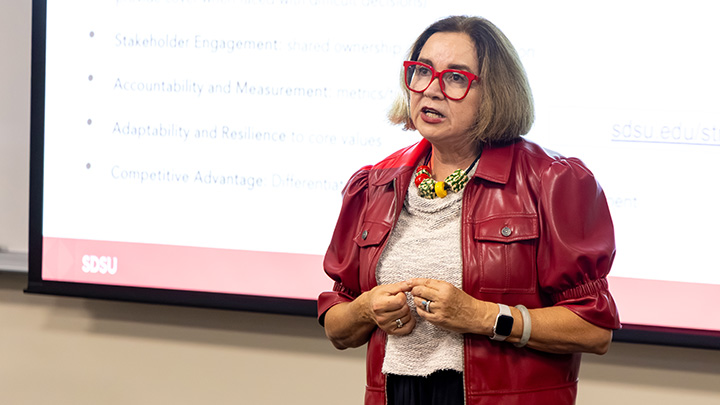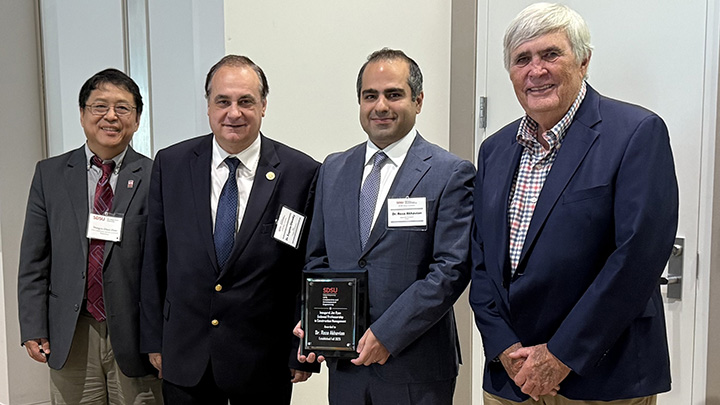Aztec Cats Find New Home
SDSU staffer John Denune is rescuing the kittens and cats who have been living on the SDSU campus.

You may have seen them roaming the campus, ducking into dark corners or sneaking through brush. These quiet prowlers scavenge trashcans and accept the occasional handout from students and staff. They are the cats and kittens of the SDSU campus.
Montezuma Mesa’s population of feral cats and their offspring have been here for generations, but now a concerned staffer is helping to find some of these little critters a real home.
John Denune, a technology security officer in SDSU’s Information and Technology Security Office, first noticed the cats when he saw a mother leading her kittens to a dumpster behind East Commons. It was then that the cat lover and 13-year SDSU employee decided to see what he could do to give them a better life.
“At first, I just brought them food,” Denune said. “SDSU has probably been a good home for feral cats for some time. There is regular access to food and its relatively safe in that they don’t have to worry about wild animals like coyotes coming after them.”
Controlling the population
Denune became concerned with how many cats he was seeing and wanted to help control the population. So, he set out to follow those infamous words of Bob Barker: “Have your pets spayed and neutered.”
“They don’t want to be captured,” Denune said. “They are wild animals so you have to be careful not to get bitten.”
Since spotting that first feline family, Denune has carefully captured three female cats and several kittens. The adult cats have been spayed and then released back on campus, but he’s found homes for a number of the kittens.
“The older cats are too wild to be domesticated so releasing them back into the ‘wild’ SDSU campus is the best thing to do,” Denune explained.
Becoming domesticated
The kittens — still young and impressionable enough to live happy lives as pets — have gone home with SDSU employees. Denune kept a third, Piper, whom he found hidden in a drain pipe near Student Services.
“I really consider this my second ‘cat family,’” said Denune, who has two additional cats at home in addition to Piper. “I come in on the weekends and feed them and, when I’m on vacation, I enlist the help of other cat-loving SDSU employees to keep an eye on them.”
Though SDSU’s efforts are informal, there are a number of other universities that have formal feral cat programs such as California Polytechnic University, San Luis Obispo, and the University of Washington. Denune hopes to formalize an SDSU program in the coming year.
Get involved
Denune said he’s not the only one on campus who’s been helping these long-tailed campus residents. Others have been donating food to him and even setting out cat food themselves.
Those interested in helping care for or adopting an Aztec cat can e-mail [email protected].
Aztec Cats Aztec Cats



